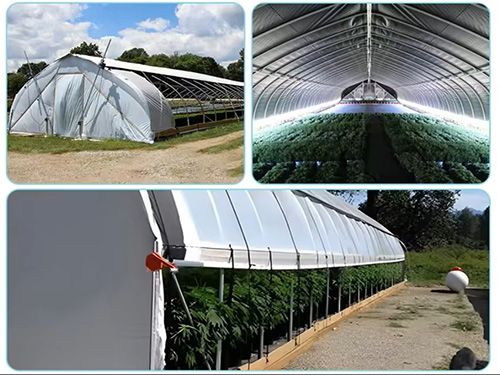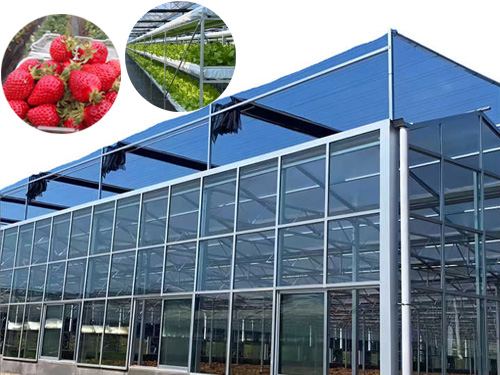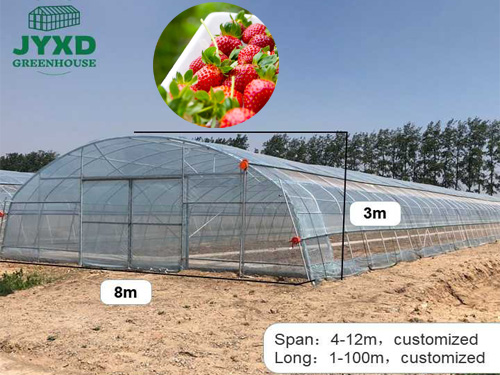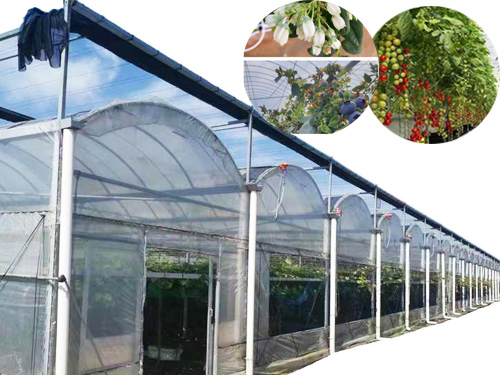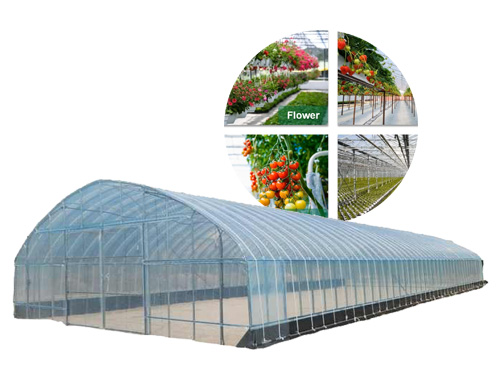NEWS DETAILS
NEWS INFORMATION
From Seed to Harvest: Complete Growth Cycle Management for Greenhouse Crops
AUTHOR:jyxd-greenhouse DATE:2025-02-25 01:06:08 HITS:68
Managing the complete growth cycle of greenhouse crops requires careful planning, precise environmental control, and effective cultivation techniques. From selecting high-quality seeds to ensuring a successful harvest, every stage plays a critical role in maximizing yield and quality. This guide covers the essential steps to optimize greenhouse crop production.
1. Seed Selection and Germination
Choosing the right seeds is the foundation of a successful greenhouse crop cycle. High-quality seeds ensure better germination rates, resistance to diseases, and higher yields.
Best Practices for Seed Selection:
• Choose disease-resistant and high-yielding seed varieties.
• Opt for organic or non-GMO seeds to maintain sustainability.
• Source seeds from reputable suppliers to ensure quality and purity.
Germination Process:
• Use a well-draining seed-starting mix with good moisture retention.
• Maintain an optimal temperature range (usually between 18-25°C, depending on the crop).
• Provide adequate lighting using LED or fluorescent grow lights if natural sunlight is insufficient.
• Keep the soil consistently moist but avoid overwatering to prevent fungal growth.
2. Transplanting Seedlings
Once seedlings develop strong roots and at least two sets of true leaves, they are ready for transplanting into the greenhouse beds or containers.
Best Practices for Transplanting:
• Harden off seedlings by gradually exposing them to greenhouse conditions.
• Ensure the transplanting area has been properly prepared with nutrient-rich soil.
• Water the seedlings before and after transplanting to minimize transplant shock.
• Maintain proper spacing between plants to allow for healthy growth and airflow.
3. Vegetative Growth Stage Management
During the vegetative stage, plants focus on root, stem, and leaf development. This phase is crucial for establishing strong plants that will produce high-quality yields.
Key Factors to Optimize Growth:
• Light Exposure: Provide at least 12-16 hours of light per day, depending on the crop type.
• Temperature Control: Maintain daytime temperatures between 20-30°C and slightly cooler nights to promote steady growth.
• Watering: Use drip irrigation or a controlled watering system to prevent overwatering and root diseases.
• Nutrient Management: Apply organic fertilizers rich in nitrogen to encourage leafy growth.
4. Flowering and Pollination
As plants transition from vegetative growth to flowering, proper care is needed to encourage healthy blooms and fruit development.
Best Practices for Flowering:
• Adjust light cycles if growing photoperiod-sensitive plants (e.g., tomatoes, peppers).
• Maintain proper humidity levels to prevent fungal diseases.
• Provide adequate airflow with fans to strengthen plant structures and reduce disease risks.
Pollination Techniques:
• For self-pollinating crops like tomatoes and peppers, gently shake the flowers or use an electric pollination tool.
• For crops requiring pollinators, introduce bees or manually pollinate using a soft brush.
5. Fruit Development and Maturation
During this stage, plants divert energy toward producing fruits or vegetables. Proper nutrition and environmental control ensure optimal size, flavor, and quality.
Best Practices for Fruit Development:
• Use potassium-rich fertilizers to promote strong fruit formation.
• Prune excess leaves and weak branches to improve air circulation and direct energy to fruiting sites.
• Monitor for pests such as aphids, whiteflies, and spider mites, and use biological pest control methods if necessary.
6. Harvesting and Post-Harvest Handling
Harvesting at the right time maximizes flavor, texture, and nutritional value.
Harvesting Tips:
• Pick fruits and vegetables at their peak ripeness based on color, size, and texture.
• Use clean, sharp tools to avoid damaging plants and reduce the risk of infections.
• Handle produce carefully to prevent bruising and extend shelf life.
Post-Harvest Management:
• Store harvested crops in optimal temperature and humidity conditions to maintain freshness.
• Wash and package produce properly for commercial distribution.
• Consider value-added processing, such as drying or freezing, to extend product lifespan.
Conclusion
Successful greenhouse crop management from seed to harvest requires careful attention to each growth stage. By optimizing seed selection, transplanting, vegetative growth, flowering, fruiting, and harvesting, growers can achieve higher yields and better-quality produce. Consistent monitoring, proper environmental control, and sustainable farming practices will ensure long-term success in greenhouse cultivation.
Would you like recommendations on specific greenhouse crops or advanced growth techniques?
Hebei Juyou Xinda Greenhouse Facilities Co.,Ltd.
Copyright © 2024-2025 https://www.jyxd-greenhouse.com. All Rights Reserved Hebei Juyou Xinda Greenhouse Facilities Co.,Ltd.Copyright





 Current Location:
Current Location:


